Estimated reading time: 8 minutes
Table of contents
DTC e-commerce vendors are completely changing the game of online selling. Through bypassing traditional distributors and department stores, vendors can take back control and sell directly to the consumer.
The way big online marketplaces and department stores price their products is wildly different from how everyday e-commerce stores do.
If you’re currently building a larger e-commerce store working with other brands, check out our pricing teardowns for Amazon and John Lewis.
In the e-commerce pricing teardown part 6, however, we’re going to look at how DTC retailers, Brooklinen uses a range of clever pricing strategies to sell more products and build a life-long brand.
You’ll learn:
- How an initial welcome offer boosts sales for new customers
- Why including savings potential on the category page increases time on page
- How Brooklinen implement the urgency principle to encourage more sales
- The importance of expanding your product line to increase cross-sell opportunities
Initial welcome offer
When you first land on the Brooklinen site, you’re met with the following page. This page offers anyone who wants it 10% off their purchase.
Now, many marketers argue against popups as they distract the user from the experience they were trying to have.

But in this case, the popup works perfectly.
Even if you’ve never visited the site before, you’d be interested in 10% off just in case. And if you’re a regular customer for Brooklinen, a 10% discount is music to your ears.

Once you land on the site, however, you’re also reminded of the message. Brooklinen is clever with their messaging copy in that they let you know the offer is both sitewide and added to the basket at checkout.
If you want to alienate your potential customers the best way to do this is through cryptic messaging that appears to be a good deal when in actual fact, is not.
An example would be: offering a discount on products but when the user gets to the checkout, they find the discount is only on specific product lines and categories.
By offering a sitewide discount, Brooklinen ensures their customers are able to freely browse the entire site to choose what they want instead of being limited to specific product types.
As a pricing strategy, offering a discount before someone starts browsing is a great way to increase sales. Think about it, when you’re browsing for products you might like, most people use price as their differentiator. But knowing everything you look at will have an additional 10% off is enough to make you browse the store with confidence that you’re getting a good bargain.
If you choose to offer a sitewide discount, think about the amount you’ll offer. For some product lines too much discount could harm your profit margins, however, it’s possible to recoup those costs through the sale of more expensive items.
So take each of your products, look at the profit margin and see what reasonable price you could offer every customer.
Failing that, add a time-sensitive offer so people have a short amount of time to make a purchase decision. This way, users aren’t able to abuse the offer but still feel grateful to you that you’ve offered them a discount in the first place.
Savings information on category pages
When you’re browsing a site with a lot of similar products, like towels, for example, it can be hard to really know:
- Which one is the best?
- Which offers the best value for money?
Most e-commerce businesses use clever product photography, product titles and reviews to help customers decide which products they want to look at in more detail.
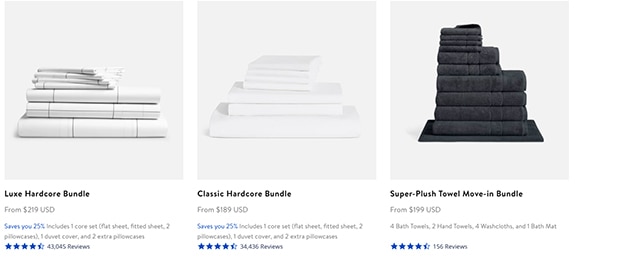
However, Brooklinen goes one step further. They let customers know how much they’ll be able to save by purchasing the product before they’ve even clicked on it.
This is a great strategy for two reasons. The first, it limits the amount of information overload. If customers have to decide between 100 seemingly similar products, the likelihood is they’ll actually end up choosing none of them, instead of picking one.
In this case, though, customers can easily see (before they open a new tab to view a product) what the product is, how many reviews it has, how much it costs, what it includes as well as how much they’ll save.
Implementing this for your e-commerce store should be easy and you may already do it. Often on e-commerce stores, marketers will use an icon or button to highlight to customers that a specific product is currently on sale.
If you’ve implemented this product, why not add a short description on a category level to outline how much they’ll save if they opt for this product. Instead of telling them “sale” – you could write “$15 off” or “save $15 when you buy this product”.
Your customers are, for the most part, lazy and want the information handed to them on a plate. The clearer you make your offers, the more likely they will be to make a purchase.
Urgency to boost sales
One area where many DTC businesses struggle with their e-commerce website is having enough category pages (especially if they want to improve their SEO). The reason being, most DTC stores sell similar types of products so realistically, there are a finite number of categories to be created.
Having multiple categories is important for users to be able to decide what they want to buy from your store and have an easy way to access those products without having to go through every product on your website.
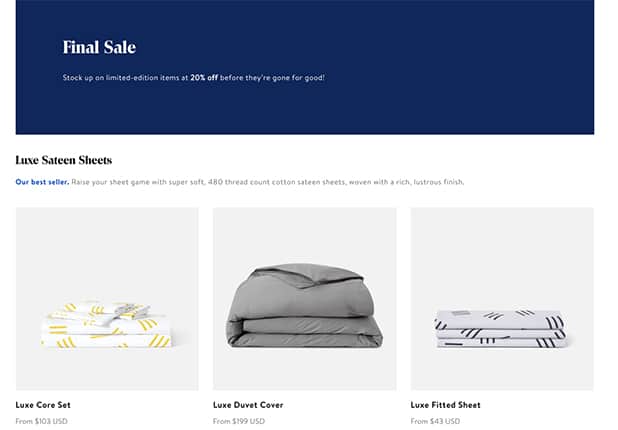
Brooklinen combats the category issue with a specific page for ‘final sales’. Now, consumers are used to sale pages. Most e-commerce stores have a sale page that houses all the products on sale at any current point.
But a final sale page is different as it combines the discount pricing strategy with a sense of urgency strategy.
Brooklinen’s final sale page houses limited edition items all with 25% off. They let customers know that these items won’t be here forever and uses “before they’re gone for good!” copy within the page.
Now for consumers, they’re enticed to buy a product because:
- It’s limited edition, not everyone will have these items
- If they don’t buy them now, they won’t have a chance to in the future
- If they buy them now, they’ll get 20%
This strategy is great if you have an e-commerce store that runs limited amounts of products for each product line. It allows you to get rid of excess stock in bulk, without significantly harming your overall profit margins.
Cross-sells
If you’re just starting out with your e-commerce store, you might have been advised to stick to a few products to start off with. This gives you an opportunity to see how receptive your customers are to specific product types and allows you to gather data about which products you should push for more aggressively in the future.
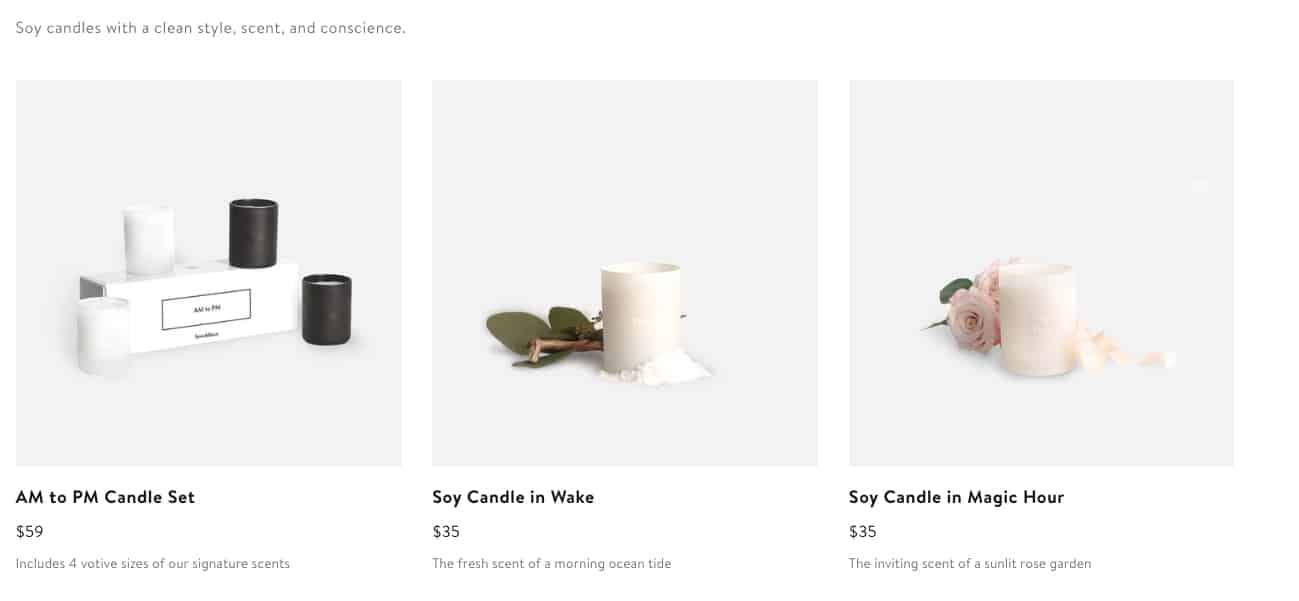
Once your store has matured and you have a clear idea of who your target audience is and what they’re interested in, you should think about expanding your product line.
There are two ways to do this. You could add additional products within the same category. So Brooklinen, for example, could add additional bedsheets to their range, or they could think slightly outside the box and consider other things their customers might like.
This is exactly what brooklinen did. They understood that the type of people who buy their products are people who care deeply about where they sleep and the type of environment they sleep in.
So while they still add new towels and bed linens to their product line, they’ve also expanded into candles too.
They understand that their customers are the type of people who would like to have candles in their bedroom and it makes sense for them to add this to their product line.
If you want to add cross-sell opportunities to your product line, it’s imperative that you really know who your customers are and what their interests are outside of your business.
For example, if your e-commerce store sold backpacks targeted at remote workers, it would make sense for you to create branded notebooks to sell as well. It’s on-brand, and most people who work remotely would like to have a notebook to jot down notes when they’re not using their laptop.
Final thoughts
In the e-commerce pricing teardown part 6, we’ve looked into Brooklinen’s pricing strategy that utilizes a wide range of popular pricing strategies that fit seamlessly into their website.
Their strong understanding of their customers and their pain points means they’re able to to build a premium bed sheet brand that still offers their customers discounts without diluting their brand image.
If your brand is strong and you know who you target and what they like, why not try some of the following strategies within your e-commerce store:
- Adding a time-sensitive welcome offers
- Including top-level product information on your category pages
- Create a sense of urgency to encourage sales
- Expand your product line beyond the obvious products
Are there any stores you’d like us to tear down? Leave a comment below.
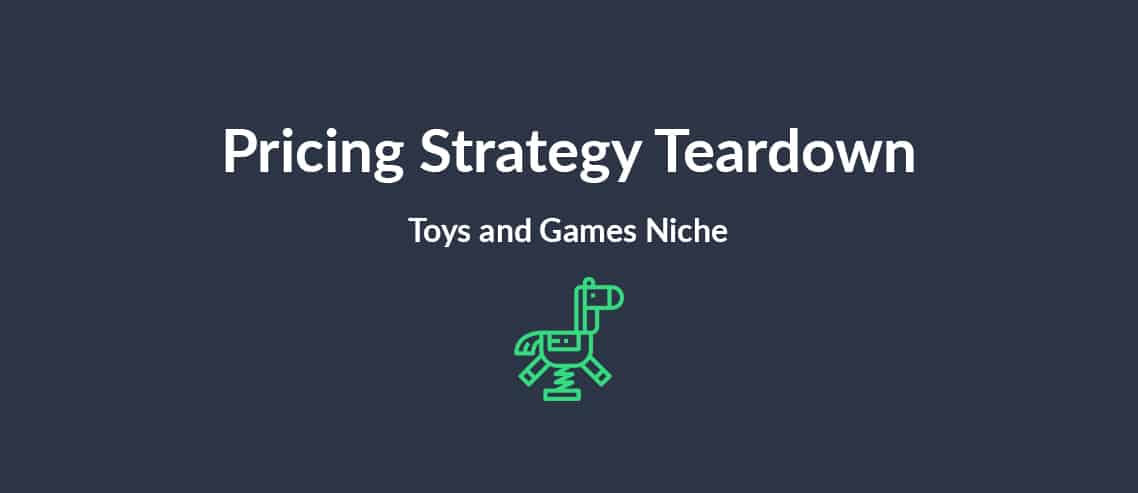

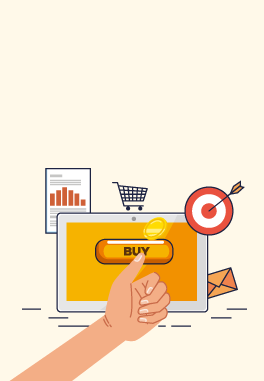
Info utili